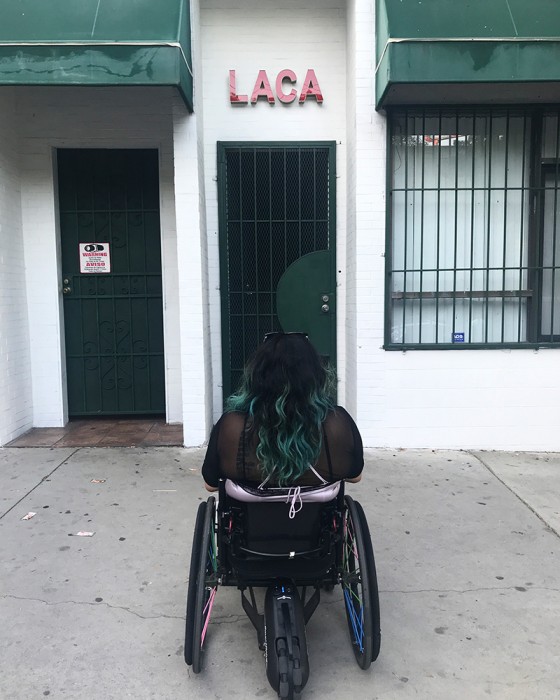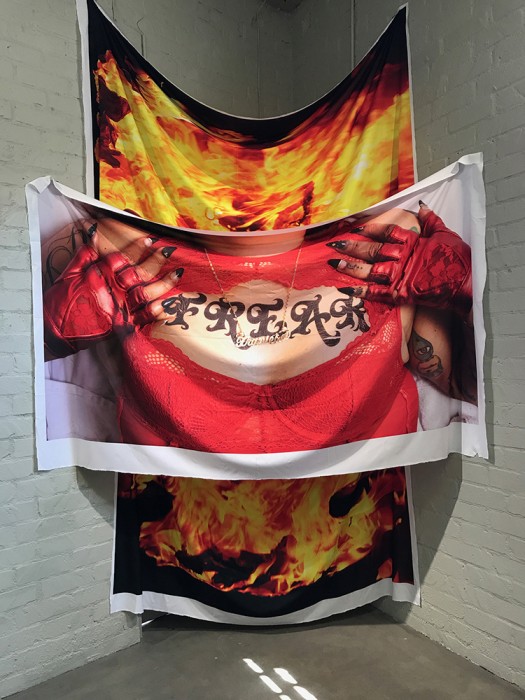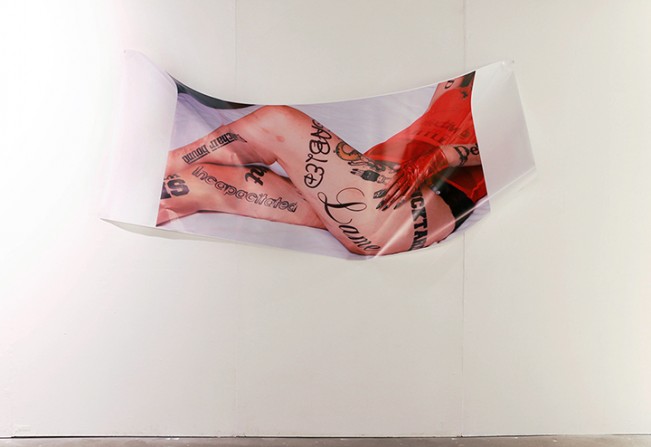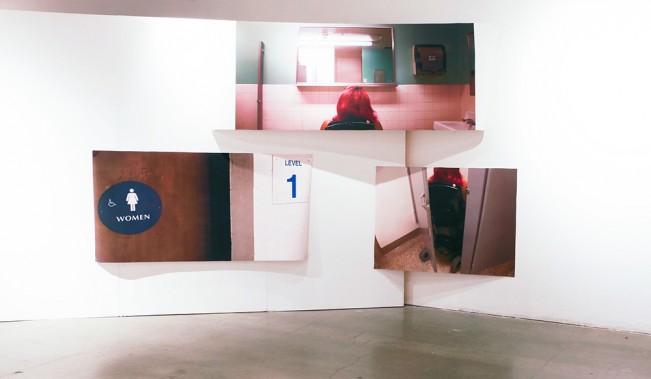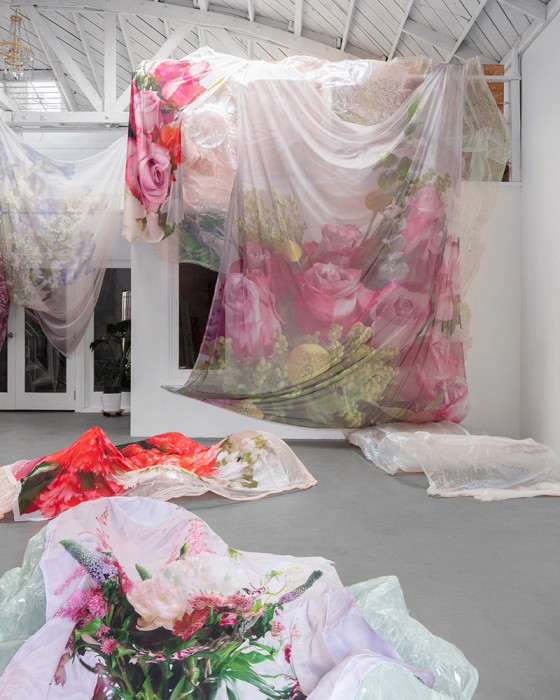Jaulas // Cages: Jaklin Romine
In a show of solidarity for those who are being held captive against their will, oppressed, and colonized by this authoritarian regime “Jaulas // Cages” is a week celebrating emerging Latinx Image-makers who I am interviewing to gain their insight and voice on the current danger it is to be outside the white patriarchal standard the current US government is striving for. This week is dedicated to all immigrants, and to those who do work or are currently in a jaula//cage. A cage being anything from physical, emotional, mental. These “Jaulas” are struggles we ALL have been within at points in our life: An enclosure of gender, a cage of identity, the pens of oppression, a box to be tokenized by.
Jaklin Romine was born in Burbank, California, and currently lives in East Los Angeles. She studied Studio Arts at Cal State LA, where she was selected to be part of the Luckman Project. She then showed in galleries around Los Angeles, such as Gallery 825, and Avenue 50, before completing her Masters of Fine Arts at CalArts. Since graduating Romine was selected to participate in the Emerging Artist 2018 show at the Barnsdall Art Park, Los Angeles, CA. Other exhibitions include New Women Space, New York, NY; Navel, Los Angeles, CA; and Night Gallery, Los Angeles, CA. Romine has lectured on her work at the Torrance Art Museum, Torrance, CA; Cal Arts, Valencia, CA as part of their ArtChangeUS: Arts in a Changing America five year initiative; and The Main Museum of Los Angeles, CA. Her work has been featured in multiple issues of Sacha Baumann’s broadsheet, Full Blede and at the 2019 she was featured on the cover in conjunction with her participation in Continuant, a group show at Noysky Projects, Hollywood, CA. She received the Rema Hort Foundation 2019 Emerging Artist Grant which assisted her in creating her latest body of work that was shown in her first solo show, Why bring me flowers when I’m dead ? when you had the time to do it when I was alive/Living with SCI, PSLA, Los Angeles, CA. Just before her solo show she also created three Volumes of a Zine/Artbook in relation to this project and was asked to participate in the 2019 Shanghai Art Book Fair, 2019 LA Zine Fest, San Francisco’s Zine Fest, 2019 Independent Art Book Fair Los Angeles & New York.
Instagram: @jakioeoeo
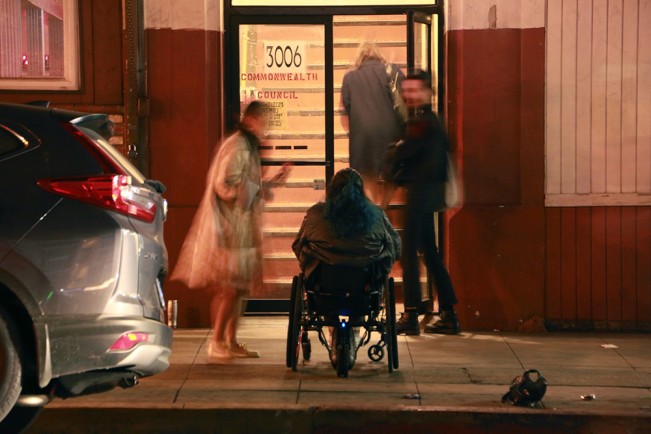
© ACCESS DENIED:COMMONWEALTH AND COUCIL,, 2015- Present
Artist Statement:
There are three cohesive areas to my practice: idea creation, working in collaboration with art production assistants, and performance. Within this dual role as artist and director, I found that the ability to formulate ideas and execute them is not limited to socially-constructed ideas of disability. I am in physical transition, and thus, wanted to create art that hovers within the realms of sculpture, photography, and installation. I ambiguate the idea of the image, by turning prints into 3D sculptural objects. This forms a new language between the image, object-hood and architecture it creates and inhabits as an installation. At this point of exploration, I use the pliability of a print to accentuate the forms within the photograph. I choose images that deal with identity, disability, physical access, and persona. Using vinyl, large format printing, fabric printing, and collage, I take over spaces to confront my new reality. While also confronting the intersection of feminist ideals that are formed by my identity as a disabled, queer, latinx, poc, living in the Southern California landscape. Where I use performance art to confront inaccessible art spaces in Los Angeles by documenting my body sitting outside for an entire art opening.
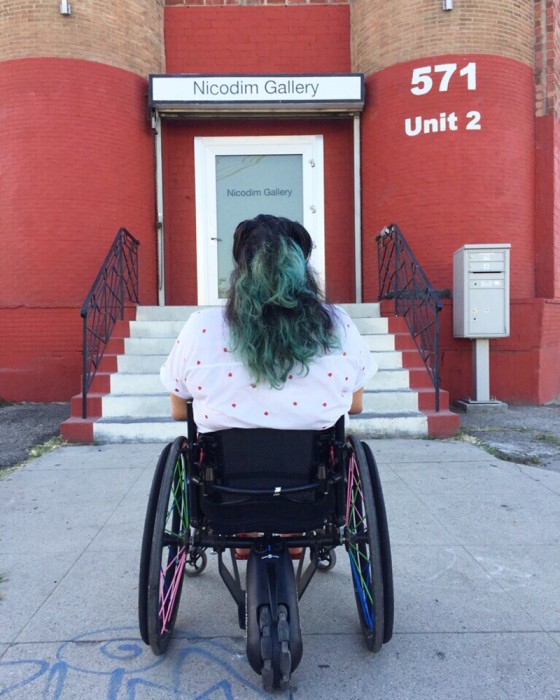
© ACCESS DENIED:NICODIM Gallery, 2015- Present
When you hear the word Jaulas//Cages, what are you thinking of?
In my head I hear confinement, insanity, oppression, slavery, exclusion, hidden away from plain sight, forgotten about, punished, and segregated. In this moment I think of the women being forcibly sterilized and the children being locked away and abused and traumatize in ICE detention centers. I think of prisons, I think of systems of oppression. I think of the prison industrial complex. I think of machismo, I think of masculinity, and gender all as lies that people have to keep telling themselves that keep them locked away from themselves, from their true selves. I think of inaccessibility and segregation from public space, bathrooms, parks, restaurants, venues, libraries, post offices, art galleries, performances, and installation art. All of which are supposed to be available to everyone. But my disabled body is excluded and caged outside of these spaces. I would also like to say that living openly and proudly as physically disabled is one of the most radical acts that anybody can exist as. However society keeps us in a box, in a cage assuming that we will only stay inside continue to hide ourselves while they continue to keep different forms of public space inaccessible to our bodies and assistive devices. Imagine going into a restaurant, bar, gig, or art show and drinking a few cocktails and knowing in some of these instances you’re gonna pay for them and you are NOT allowed to use the bathroom because your body can’t fit inside and have decent human privacy.
![© ACCESS DENIED: Statement On Human Resources [Still from outdoor installation Performance at Human Resources ], 2020](http://lenscratch.com/wp-content/uploads/2020/09/4.Romine_ACCESS_DENIED_Statement_On_Human_Resources-651x650.jpg)
© ACCESS DENIED: Statement On Human Resources [Still from outdoor installation Performance at Human Resources ], 2020
How would you describe your upbringing and how you came to be an artist?
When I was eight years old my grandma gave me a Polaroid camera. The auto focus SLR Vision, that was landscape in nature. I thought it was so cool that it flipped up and the lens popped out and the flash was on top. I loved hearing the camera snap into motion ready to shoot, ready to document ready, to collect memories. My grandma gave me my first art tool that would bring me to this platform today. She inspired my future by putting that camera in my hands as a child and helping me learn to create my vision. I also remember writing down in a yearly school picture album, that my parents gave me, about how I wanted to be an artist, astronaut and a teacher. Even with these pleasant thoughts, my upbringing wasn’t the best, I had two parents that had two kids very young and didn’t stay together for very long and had a lot of drama, trauma, and arguments before their divorce. This had an after affect on my practice because when my dad, even with a fireman’s salary, need more money after the divorce, my sister an I would go with him and mow lawns and paint houses in all white neighborhoods like Santa Clarita. Which lead to lots of time at the hardware store, allowing my young mind to imagine alternate uses for household repair items and tools. Granting me access to memories of undulating shapes to utilize. Now with my matured imagination I use these everyday items to support the creation of my sculptures. The divorcee caused us to spend a significant amount of time with our grandmas who both were tailors/seamstress making their own clothes, and my parents outfits when they were growing up. My sister and I would spend hours with her at the fabric stores in Downtown Los Angeles looking at different types of material and hundreds of patterns by Simplicity, McCalls, and Vogue. I distinctly remember not seeing my likeness in any advertisement campaign for any of these lines, or represent it on the packaging, even from an able-bodied, young, latin woman perspective. Now as a disabled, queer, latinx, poc, w/ some Scottish identity tide to my surname. I use my intersectional identities to inform the creation of my sculptures that are made of the different types of materials that my grandma’s used to sew their own fashion. Lace, chartreuse, tool, and iridescent organza are only the first few experiments I have tried to create fabric, resin, sculptural shapes. I also was studied photography since I was 18 years old. I first started taking large format, fashion, and experimental photo classes at PCC, Pasadena City College, whose program helped me first help me after my accident when I was 21. Then I continued to do studio art at Cal State LA and attended, fought, and graduated from Cal Arts MFA Photo Program. Each area of study offering me a different experience that has informed areas of my practice at this current moment.
From your upbringing and work, what does Latinidad, mean to you? Does being Latinx inform for work?
The project that exude most of this love and celebration of my LatinX identity is my project.Why Bring Me Flowers When I’m Dead? When You Had The Time To Do It When I Was Alive? The series is about the Amor Eterno that I have for mi Abuela. Where I contemplate the continuous celebration of my grandma’s life while she is alive instead after her untimely death. So I do this by photographing the flowers I source and buy in the downtown Los Angeles flower district and arrange them in my home into a bouquets. One is delivered to her home and another for my own. Before Covid and strict quarantine rules, I would go and spend time with her and give her the flowers and have lunch and have conversations about everything. In the visual installation you see my love for mi Abuela through the care and beautiful depiction of the flores floating on fabric. In my zine there are stories of our time together, our debates about our Latin identity, discussing race relations, our lovely lunches in East LA on Brooklyn Avenue. and our history together. But my upbringing othered me from my Latin identity. My parents were both not raised speaking Spanish because both of their parents feared them being put in remedial learning. Spanish speakers in their neighborhoods were automatically being put into ESL. So all the Spanish that I learned from being in school, watching novelas with my grandmas, and speaking Spanish with mi Abuela. Only when I was older never when I was a kid. My dad is half white and half Mexican and my mom is full Mexican and not white passing, my dad is white passing. Which informs both of their identities and totally opposite ways. My mother wanted to align her self with whiteness and I had to unlearn that and embrace my Latin identity on my own. This necessary push back forced my rebellious streak that allows me to make the art that I do today.
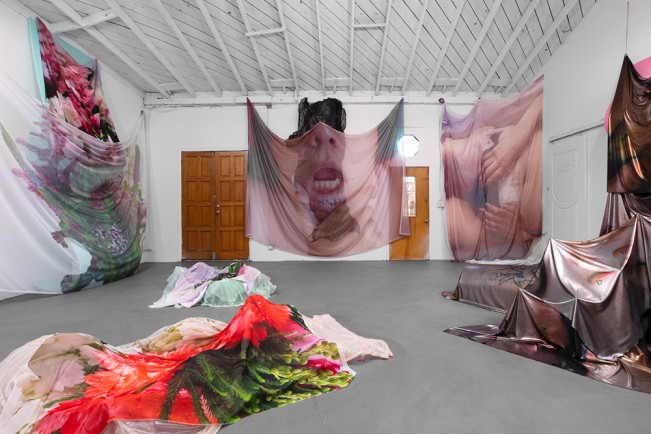
© Why Bring Me Flowers When I Am Dead? When You Had The Time To Do It When I Was Alive: Week 25 / Week 18 (Installation View), 2019
Who and/or what inspires you?
Oh well right now artist Diaga Grantina, artist performer popstar Mandy Harris, Artis Cameron Cameron, Clifford Prince King, King Texas Isaiah, Artist Emily Barker, Artist Yazime Diaz, Publisher and artist Kandis Williams.

© Why Bring Me Flowers When I Am Dead? When You Had The Time To Do It When I Was Alive: Week 25 / Week 33 & Living w/ SCI, (Installation View), 2019
Your work is dynamic, vibrant, and extremely alluring for me, what do you feel is your relationship with the materiality of the photograph? What leads you to break the frame?
Well first and foremost I think that photography is very beautiful and it’s traditional presentation is very simply alluring. However I think that photography can do so much more than be framed on the wall behind glass. My desire to break away from the frame comes from the desire to break out of my own cage and take up as much space as possible. I digitally sublimate my photographs onto poly chiffon and iridescent fabrics and I undulate and ambiguity the photograph and the image. Where I hover in between image and object-hood freely. With no bounds. I try to break the rules of art ideals thats say that an image can never be an object and an object can never be an image they are both independent artifacts in art theory and continue to droop and sag my photographs. I also create fabric sculptures that were dipped in resin in order to push the photograph out from the wall and up from the ground pushing the photograph into the third dimension further blurring the lines of identification. I love the way that the photograph hugs and lays sensually on black and white lace. tool and iridescent shear organza. I’ve been told that the way that the fabric lays on top of the sculptures it’s very alluring as though the fabric were covering a part of the body and glimpses of the sculpture are like pieces of my body being revealed in the photography and the lifting and drooping fabrics.
What do you want to see more of in the art world?
What I would want to see more in the art world is more POC. LGBTQA, Femme presenting, woman, physically disabled, Solo Shows. I really don’t want to see any more white male Cis Hetero solo shows.! We all believe that you have had your time and thank you for that but it is now time for you to sit down in the back and let everybody else rise and shine. As an intersectional disabled, femme presenting, queer, Latinx, woman I experience multiple layers of oppression. However within the art world I am segregated from public space on a consistent basis. I am segregated from some art galleries, DIY music venues, and performance spaces. These places are physically in accessible to the physically disabled body. They are in upstairs locations without any elevator access. Leaving me outside shackled to the bottom of the stairs away from everyone upstairs. I call attention to this in my project ACCESS DENIED. In the project I call out the spaces on Instagram after documenting my performance of inaccessibility outside of the gallery for an entire opening or closing. These ableist art spaces all have raving statements of inclusion with all intersectional oppressed identities besides my own. They say that they are welcoming and celebrate POC, LGBTQA, and all people from all walks of life. Which is also ableist, not every body can walk. I continue to make this institutional critique because I seem to be the only one that’s making this an issue that matters and a continued dialogue about the exclusion of the physically disabled body. Some people say that I am going to be pigeonholed for this type of work but I need to continue to make it if it’s going to continue to happen because it’s not just for me it’s for every other disabled person. I am ‘THAT” girl, the one who pushes back, the one that nobody wants to be, the one that always gets talked about negatively because they’re making too much noise. But I know that I have a purpose with my message that is strong enough to strikes fear into peoples uncomfortable perspectives of “inclussion”. That sometimes has me sought out for my intersectional identity so that other people can virtue signal their own institutions, platforms, and communities.
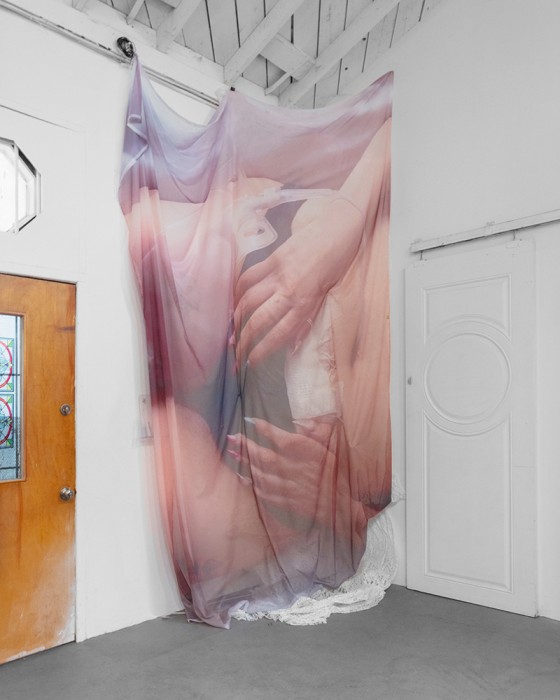
© Why Bring Me Flowers When I Am Dead? When You Had The Time To Do It When I Was Alive: Week 18: RISE (Over Installation View), 2019
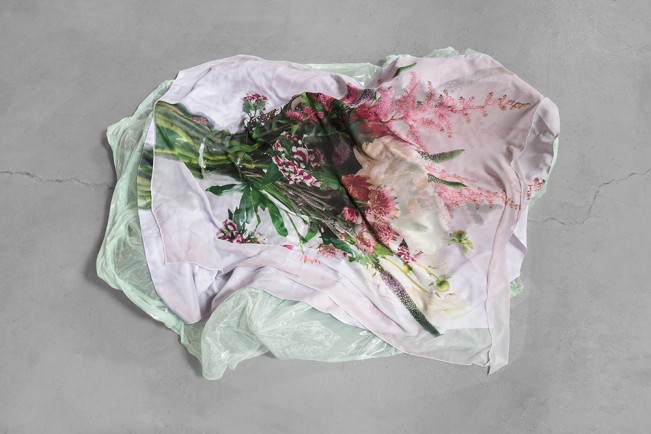
© Why Bring Me Flowers When I Am Dead? When You Had The Time To Do It When I Was Alive: Week 25: The Valley (Over Installation View), 2019
What advice would you have for up and coming Latinx artists?
Mantente fiel a tus raíces y a tu verdadera identidad. Please stay true to your roots and your true identity. When you are true to who you are people will recognize your authenticity and gravitate towards your power and can’t stay away. Our stories are important and they need to be told. The neighborhood you grew up in is a beautiful landscape and is a magical backdrop. Don’t be afraid to show where you come from. Never hide from who you are.
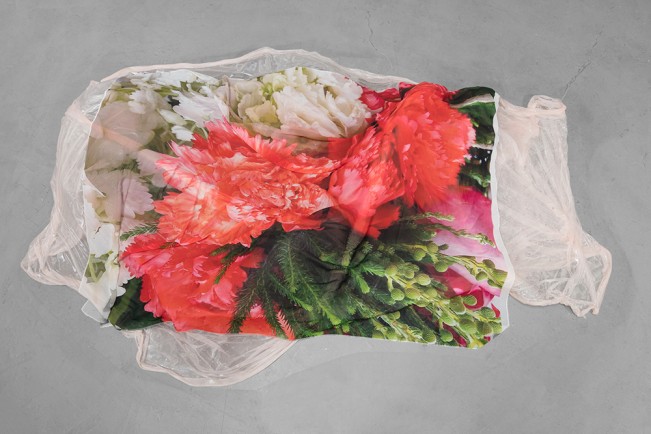
© Why Bring Me Flowers When I Am Dead? When You Had The Time To Do It When I Was Alive: Week 25: The Valley (Over Installation View), 2019
What is next for you?
I’m going to be working in the studio and finishing up a few photo shoots where I’ve been creating set designs with my own materials and sculptures. Taking a closer look how I use, what I use and how I can transform it into a whole other immersive environment with curving, wavy , ambiguous shapes. Seeing what foam sheets colored sheets can bend and curb and put in place. Forcing a new understanding of my materials advice cultural elements for my visual installations. While also contemplating potential international travel by applying to residency’s for a hopeful next year of actual possibilities of mobility if we are no longer band in Japan. This year I had so many new possibilities cancel. I was supposed to be in the Queer Biannual in Los Angeles but that was canceled/delayed for an indefinite amount of time…. I also was supposed to participate in the Seattle art book fair, the Pomona our book fair,, the Chicago art book fair. And I had hopes of getting into the Tokyo art book fair but it has been moved online. I hope that next year I will be able to travel to all these places and take part in all of these, in person, art fairs if it becomes safe to be with each other.
Posts on Lenscratch may not be reproduced without the permission of the Lenscratch staff and the photographer.
Recommended
-
Salua Ares: Absense as FormNovember 29th, 2025
-
Ricardo Miguel Hernández: When the memory turns to dust and Beyond PainNovember 28th, 2025
-
Pamela Landau Connolly: Columbus DriveNovember 26th, 2025
-
KELIY ANDERSON-STALEY: Wilderness No longer at the Edge of ThingsNovember 19th, 2025
-
Jackie Mulder: Thought TrailsNovember 18th, 2025

